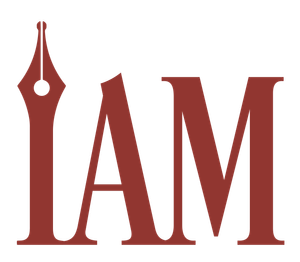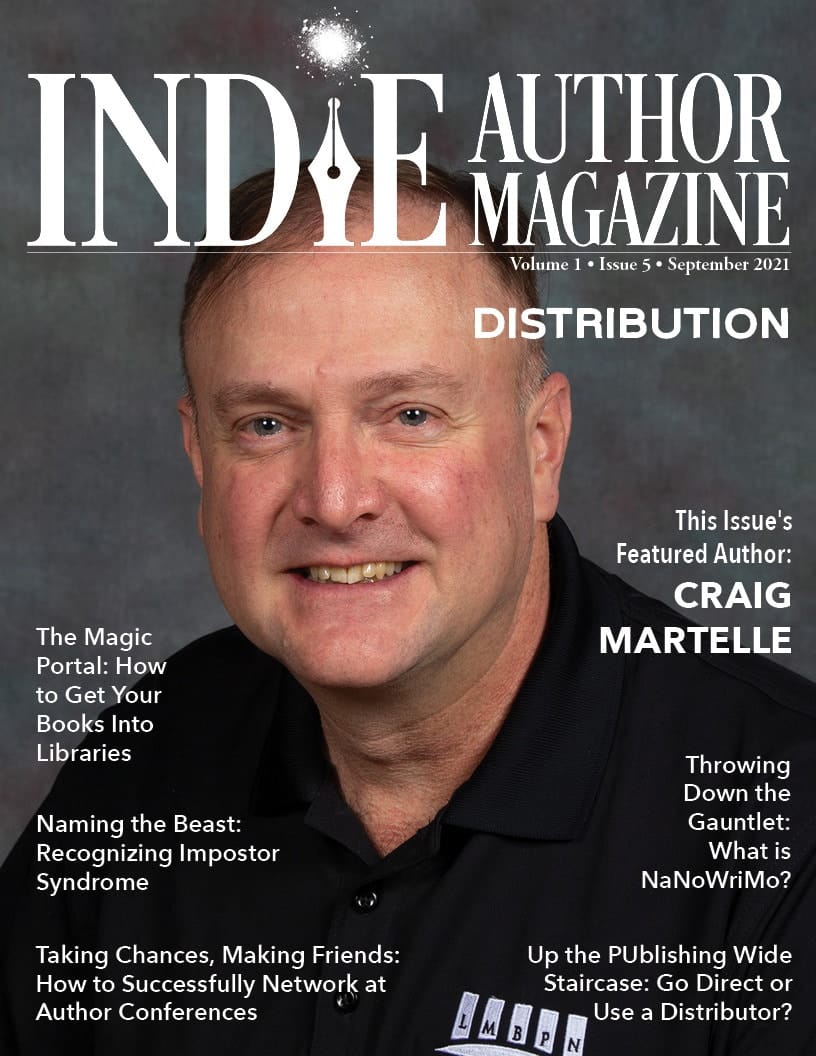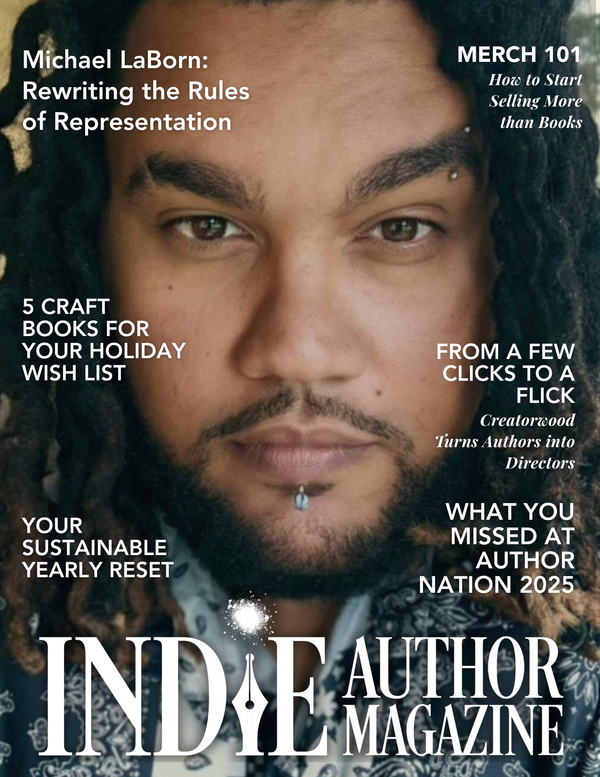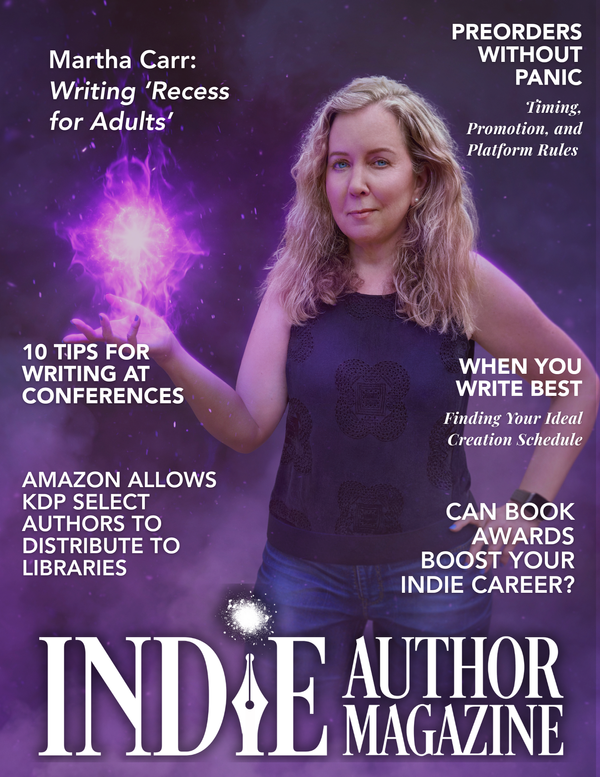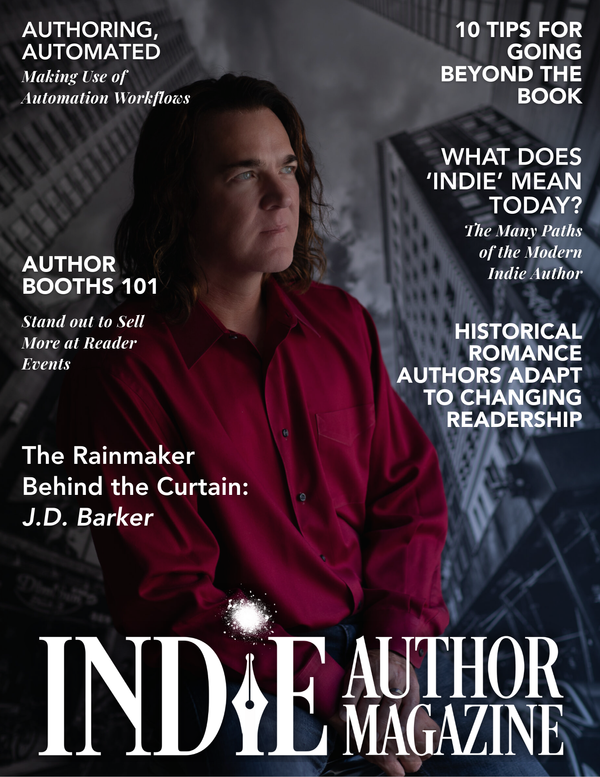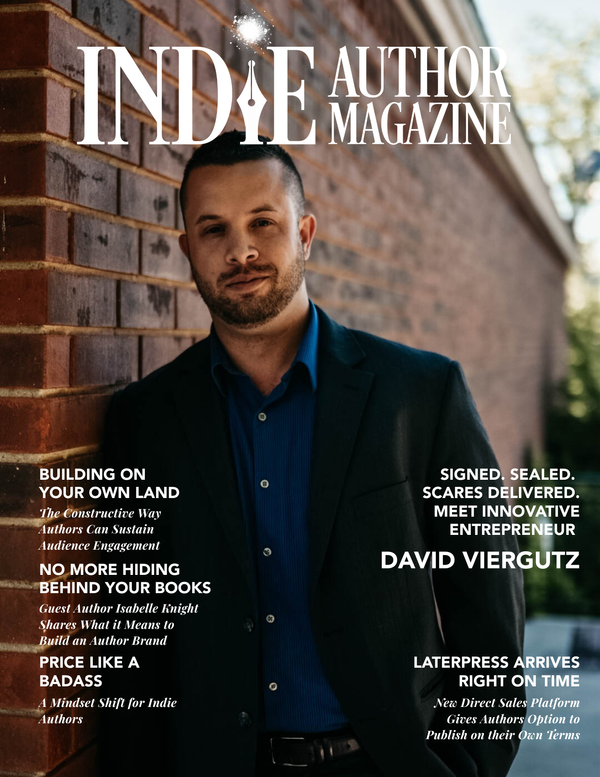Partner Spotlight
|
|
Space Opera Writing for Indie Sci-Fi Authors
All Your Favorite Stories...in Space
Space Opera is a popular genre among authors and readers who enjoy Sci-Fi themed stories with an epic scope, splashy tech, romantic subplots, and a sharp contrast between good and evil. Where other genres of Science Fiction speculate on the intersection of technology with society, Space Opera shifts its focus from the substance of Sci-Fi onto the style of Sci-Fi.
Use the Source, Luke!
Space Opera often starts with terrestrial source material, adds tech-flavoring, and recasts the story among the stars.
Buck Rogers was Rip Van Winkle, but in space. Star Trek was conceived as a Western, but in space. The original Star Wars was a samurai movie, but in space. The Hitchhiker’s Guide to the Galaxy by Douglas Adams was a travelogue, but in space. Space Opera by Catherynne M. Valente is a Eurovision Song Contest, but in space.
Welcome to the Planet of Hats
Worldbuilding in Space Opera tends to be streamlined. The genre is famous for single-biome planets and monocultural worlds where all inhabitants share the same personality type, physical characteristics, and fashion sense. Since characters may visit several planets in a story, each for only a chapter or two, deeper worldbuilding can become a distraction.
Fortunately, Space Opera readers are willing to suspend disbelief when confronted with worlds and cultures that defy logic, or which incorporate systems of space-magic and orders of space-wizards.
Have Fun Storming the Space-Castle
Simply dressing a story in allegorical space-clothing isn’t enough to make it a Space Opera. This genre also features uncomplicated protagonists on an uncomplicated quest. The heroes are extra heroic, the villains are extra villainous, and the bug-eyed and/or reptilian aliens are extra bug-eyed and/or reptilian. The stakes are often galactic in scope, and no one has time to wrestle with their conscience for long when the fate of the galaxy hangs in the balance.
Character goals and motivations usually boil down to something simple: the protagonist may need to collect the space-McGuffins, storm the space-castle, battle the space-ninjas, rescue the space-prince/princess, and return home to enjoy a space-medal ceremony.
The important thing in a Space Opera is that the hero always wins and good always triumphs over evil. This may happen in a standalone book or certainly by the finale of a series.
Subverted Tropes
Knowing what tropes make up a genre can help us figure out which rules can be bent or twisted without breaking reader expectations or shifting the story into a different genre.
Space Opera tends to gloss over hard-science explanations for space weapons, alien biology, faster-than-light travel, and the like. Injecting realistic science may subvert that expectation. An episode of Futurama centered around a real-life mathematical theorem invented for the show by a writer who holds a PhD in applied mathematics. The result was an effective contrast between the goofy antics of space-basketball players and a puzzle of real-world logic.
But injecting science at the wrong time or in the wrong way can threaten the sense of magic and wonder on which Space Opera relies. For example, many fans expressed outrage when the Star Wars prequels retroactively explained the mysterious all-pervasive Force as resulting from space-bugs in a Jedi’s bloodstream.
Letting the hero fail or allowing the villain to win can provide a powerful and unexpected cliffhanger in the middle of a series. Exploring character backstories, redeeming villains, adding moral complexity, and developing the story world can bring gravity into a previously free-floating work of escapism. But readers will still expect a return to the Space Opera’s light-hearted form and an ultimately happy ending.
Happily Ever After...In Space!
These stories take readers on an uplifting joyride through a galaxy of wonder. When all the elements fall into place, they have the potential to become iconic, beloved, and cemented into our popular culture.
Sidebar: Space Opera Tropes
1. Source Material in Spaaace! – From Bible stories to Shakespeare’s plays to Gilligan’s Island, a wide variety of source material has been adapted into Space Operas by moving the action off-planet and sprinkling in the tropes.
2. Single-Biome Planets – To help distinguish one world from another, every part of a planet can be given the same climate, vegetation, and terrain.
3. Planet of Hats – To help distinguish one world from another, every member of a human or alien culture may share a common personality trait, physical trait, or proclivity toward wearing the same stylish hat.
4. The Galactic Empire – No galaxy is big enough for our good-hearted heroes to share with an interplanetary evil empire bent on conquest.
5. Spaceships with Personality – The obligatory journey from world to world becomes more memorable in an iconic spaceship, especially one that breaks down at the most inconvenient times.
6. A Menagerie of Aliens – They range from humans with prosthetic noses to Lovecraftian nightmares with laser eyes. The thing about aliens is that they come in all shapes, sizes, and temperaments.
7. Robots, Droids, and Cyborgs – Fully or partially mechanical beings are a fixture. Some, indistinguishable from biological humans, may not even know what they are.
8. Space Magic – Aside from the sufficiently advanced technology that works like magic, there is often actual magic, telepathy, and New Age crystal goodness that works like technology.
9. Good vs Evil – Even when the story focuses on smugglers, scoundrels, and bounty-hunters, all characters can choose whether they are fundamentally good or fundamentally evil.
10. Good Triumphs Against All Odds – Much like Romance readers expect a happy ending, Space Opera readers expect a victorious ending or a reset to a prior state.

Enhance Historical Fiction Without Losing Momentum
You’ve written a rollicking good story set in eighteenth-century France, and now you want to add some killer details. It’s time to immerse yourself in research.
Turn back time
All historical novels begin with the promise that the author will subtly connect the “Then” to the “Now” so the reader can suspend disbelief throughout. To do this, and maintain a well-paced narrative that grabs the attention and holds it, you’ll need to ensure you steer clear of anachronisms and other inaccuracies.
In Medieval Underpants and Other Blunders: A Writer’s (& Editor’s) Guide to Keeping Historical Fiction Free of Common Anachronisms, Errors and Myths, Susanne Alleyn recommends asking yourself, “Do I know this, or do I think I know this?” To which might be added, “Did they think like this? Did they act like this?”
Doing the research
In non-fiction, an often used research analogy is that of the three-legged stool (the fact), which is only stable when all three legs (supporting sources) are present. In fiction, using a primary or reputable secondary source performs the same job.
Primary (contemporaneous) sources should always be your first choice. These can be found in libraries, museums, and archives, and online catalogues will allow you to search before you visit. If you intend on using a real town or city, get a map from the era, as street layouts and names change over time. If your story is set post-1839, make use of photographic archives to keep descriptions on point.
Other works such as diaries, autobiographies, and written histories are useful for small details and period dialogue, and good websites for these include Project Gutenberg and Google Scholar. Contemporaneous fiction can be a good way to immerse yourself in the atmosphere of the period, e.g., Jane Austen for the Regency era or Charles Dickens for the Victorian era. However, as it is fiction, still check with a factual source for any specifics you wish to include.
Secondary (later) sources include magazines, biographies, and current historical works. History Today (UK) or the Smithsonian Magazine (US) offer well-researched articles on a wide range of subjects. Historical works are useful for an overview of the period and contain footnotes and bibliographies giving further sources.
Talk of the town
On the whole, it’s best not to use archaic language and far better to tweak your dialogue for the modern ear. “Thee,” “thou,” and “prithee” may sound good but they will slow the narrative. Instead, consider both word order and speech patterns, or try removing contractions and using “I cannot” instead of “I can’t” to suggest older forms of speech.
Whilst colloquialisms add period color to dialogue, it’s important to place them in context. For instance, if, in your Victorian novel, you create a character who constantly makes silly mistakes and gets called a foozler, a reader should have no difficulty knowing what that means. Whereas, if you throw in the word tufthunter with no explanation, they’re going to be flummoxed and bumped out of the story. Colloquialisms are best used sparingly and for impact.
For similes and idioms, check the date of first usage. The same goes for words that have meant different things at different times, or in different locations. A good place to start for all of these is John Dierdorf’s website You Can’t Say That https://www.prismnet.com/~dierdorf/nono.html
If you can’t find a supporting source for an important detail, it doesn’t necessarily mean you have to leave it out. Remember, you’re writing fiction and can only do your best to get things right. If you’re worried about being questioned in a review then include an author’s note at the end of your book.
Historical fiction and its readers thrive on detail, so by doing your research and checking the facts your novel will maintain its accuracy without losing its pace.

Grow Your Author Brand with Merchandise Sales
How to Use Merchandise Sales on your Website to Make Money and Grow Your Brand
In today’s economy, it’s a given that relying on a single stream of income is risky business. For authors, that means looking at your books as content and finding ways to slice and dice your creative work into other methods of consumption such as audiobooks, serials, or paid newsletters.
Having multiple channels of distribution and revenue for your books is a smart start. But how can you expand and maximize your sales potential without carving too deeply into precious writing time? The answer could be the addition of a merchandise store to your website to delight your fans, expand your brand, and reliably increase your bottom line.
What’s for Sale?
Fans love merch. Posters, key chains, magnets, stickers, and notebooks have all become staples at Comic-Con and other public events.
For diehard fans, it’s a way to identify themselves to one another and feel part of an inner circle. To satisfy that audience, it’s common for traditional publishers to offer mugs, hats, stickers, and other swag on an author’s website, for sale or as promotional giveaways. On Leigh Bardugo’s website, for example, you can purchase a plethora of items related to her Grishaverse like Darkling socks and Six of Crows tote bags. They often run contests for autographed and one-of-a-kind items.
How Indie Authors Can Ride This Wave
Technologically speaking, indie authors have the same capabilities at their disposal. With free website builders like Squarespace, Wix, and WordPress, innovative authors offer a multitude of products directly for sale or download from their website like signed books, collector’s editions, downloadable chapters, free novellas in PDF format, and audio copies.
Some have expanded their ecommerce store to include branded merchandise using dropship companies like Printful and Art of Where, which allow you to create customized products like mugs, t-shirts, tote bags, stickers, mousepads, hats, keychains, and hundreds of other products. These items are displayed alongside any other merchandise you have for direct sale or download, creating a one-stop-shop for your fans.
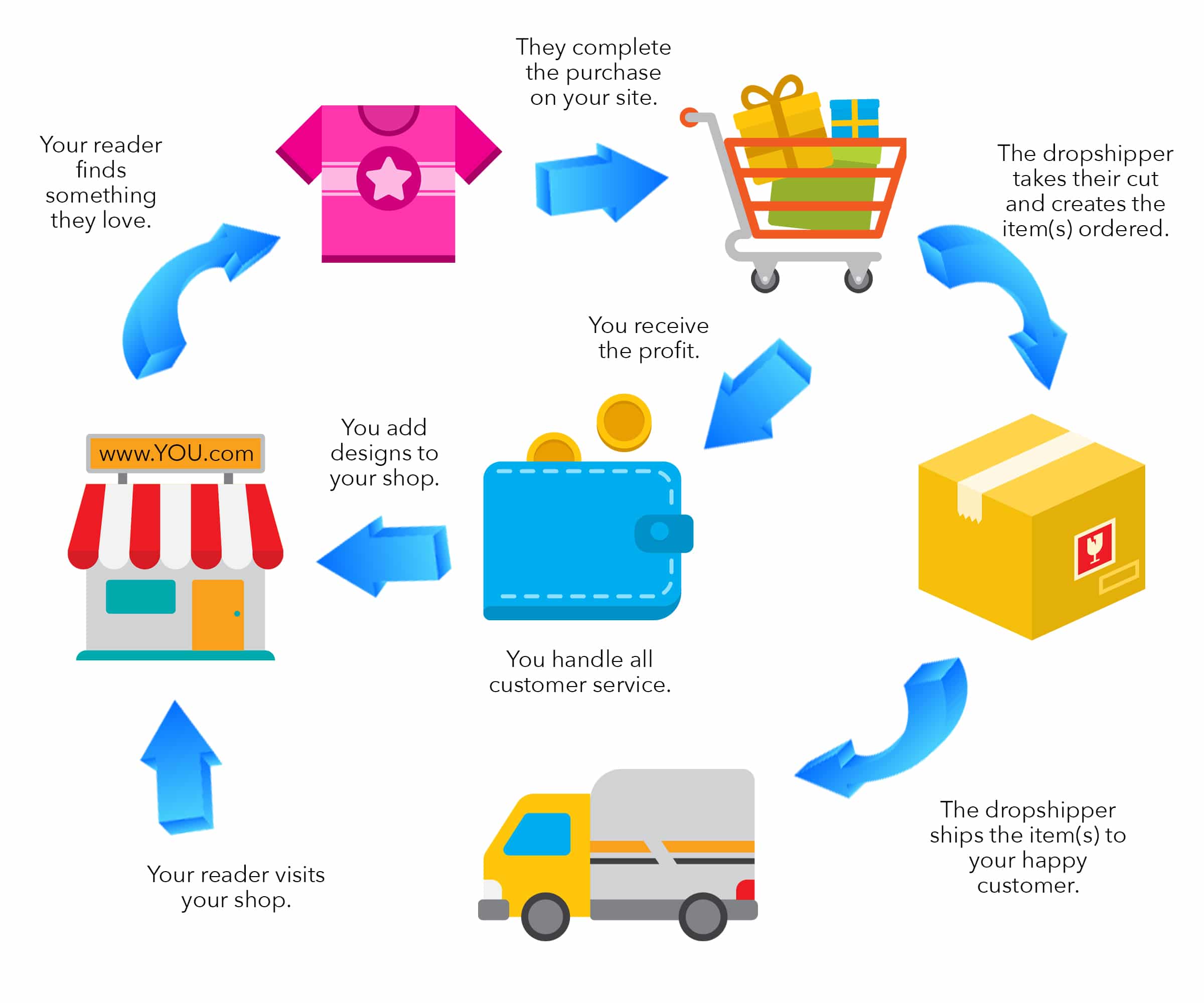
NaNoWriMo Challenge: Boost Creativity and Business Skills
What Is National Novel Writing Month and Why You Should Participate
Warning: This story starts and ends with a challenge. Choices have to be made. Read and walk away with insight. Read and walk away with the seed of an idea that will flex creativity, demand tenacity, and forever change the writer/story relationship. That, dear reader, demonstrates the powerful touch of National Novel Writing Month, henceforth discussed as NaNoWriMo.
A Journey to the Past
Let’s flip back the calendar pages to June 1999. Now we are at the beginning of the challenge. The place is San Francisco. Picture a group of friends talking about the world as it was and dreaming about what they could do with it. The conversation is animated, especially when the topic of writing a novel, an entire novel, in a month rises to the surface.
This group of writers (twenty-one in all) decided to take the challenge. Keeping in line with the SMART (Specific, Measurable, Attainable, Relevant, Time Based) goals, the novel was defined as a story that contains at least 50,000 words. Two weeks later, July 1, 1999, Chris Baty and his friends launched their first NaNoWriMo.
Several fell to the wayside, the process too demanding. Many succeeded. All were changed. The month of writing every day, fighting with and for characters, battling distractions and fatigue, changed their appreciation for the art of storytelling.
The Battle Continues
The next year, more joined the challenge, and it grew and grew. Last year, NaNoWriMo had 383,064 participants. The Young Writer’s Program had 97,439 students and educators. A lot of these writers worked from home, many worked in the 448 libraries, bookstores, and community centers that are part of the Come Write In program.
The timing of NaNoWriMo changed too. Instead of meeting in July when the weather was perfect for outdoor activities, the date was changed to November. It gave people a chance to be productive when the weather kept them indoors anyway.
Best sellers like Wool, Fan Girl, Cinder, and The Night Circus were products of NaNoWriMo. The Night Circus attests to the flexibility of NaNoWriMo. It was written over two NaNoWriMo years. In other words, falling short of meeting the challenge doesn’t connote failure.
Join the Fray
Countless indie authors started with NaNoWriMo.
If we set the challenge of writing 50,000 words in a month aside, there is so much more to glean from the NaNoWriMo experience. Over the month of November, authors around the world will meet in person and virtually for sprints, cheering each other on. People who volunteer as municipal liaisons coordinate the meetings. Twitter has round-the-clock sprinting sessions where people check in and share their progress. YouTubers post videos with tips and inspiration.
The NaNoWriMo website is loaded with materials to keep an author going. It has a personal progress bar, stats for the authors in geographical communities, badges, chats to connect with other authors, and inspirational notes delivered to the inbox.
The beauty of the NaNoWriMo challenge is far greater than writing a book at the end of the month. Yes, that is awesome. But it also brings authors together. It debunks the myth of writers consuming copious quantities of coffee while pounding away at the keyboard, begging the muse for inspiration, alone. When the author accepts the gauntlet, they receive more than a story. Win or lose, 50k words or 500, on December 1st, those who attempted the challenge, walk with a confident limp in their ego.
Will you be one of them?
Works Cited
“14 NaNoWriMo Books That Have Been Published.” Mental Floss, 5 Nov. 2015, www.mentalfloss.com/article/53481/14-published-novels-written-during-nanowrimo#:~:text=14 Published Novels Written During NaNoWriMo | Mental Floss.
Baty, Chris. No Plot? No Problem!: a Low-Stress, High-Velocity Guide to Writing a Novel in 30 Days. Chronicle Books, 2014.
Burt, Kayti, et al. “7 Books That Started As NaNoWriMo Novels.” Den of Geek, 2 Nov. 2018, www.denofgeek.com/books/7-books-that-started-as-nanowrimo-novels/.
“National Novel Writing Month.” Wikiwrimo, www.wikiwrimo.org/wiki/National_Novel_Writing_Month.
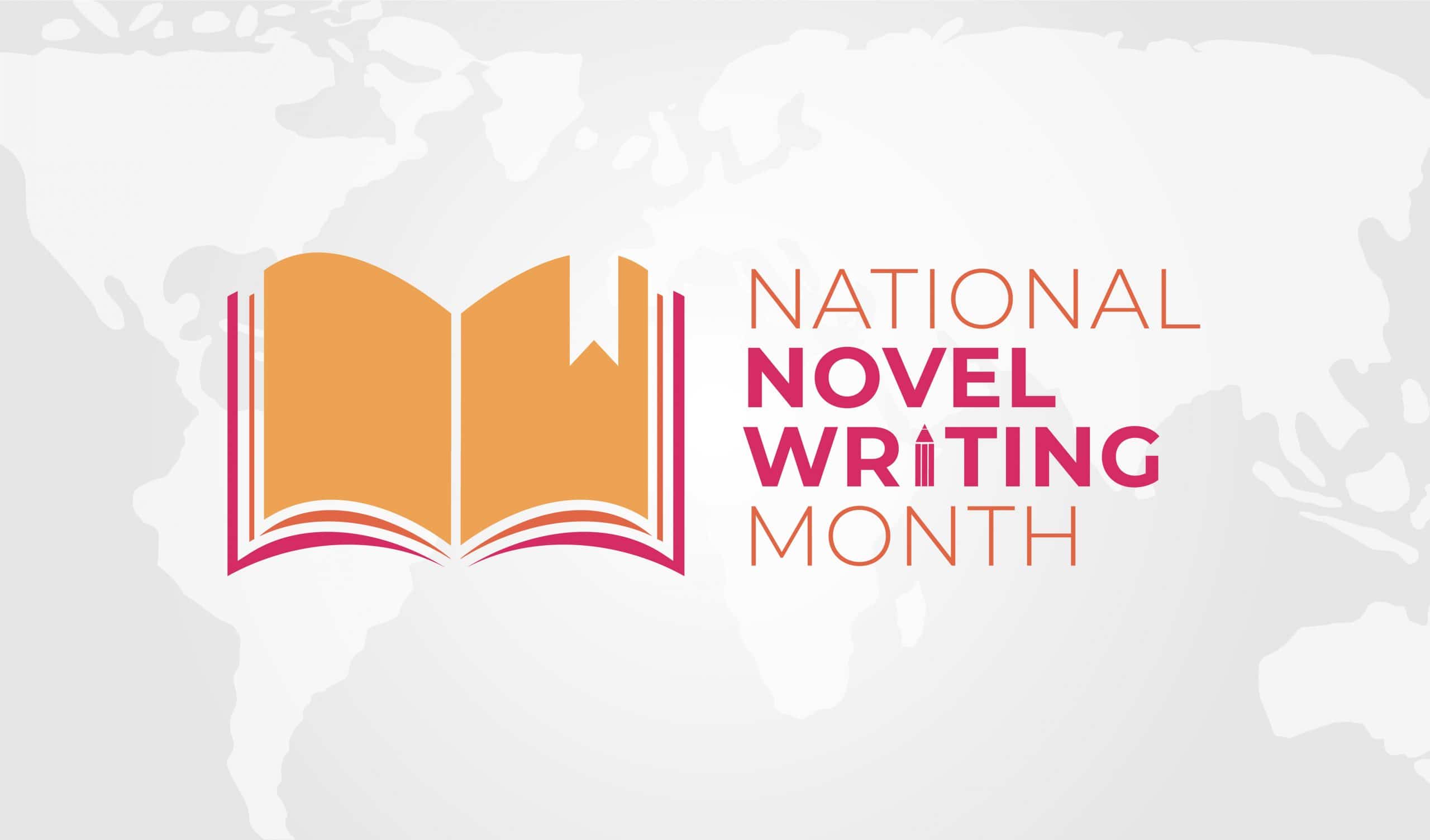
Desk Stretches for Indie Writers: Ease Stress and Boost Focus
Being an independent writer can mean a lot of hours behind a desk. It also means we can take on a lot of stress while we push for deadlines, learn marketing strategies, and plan our world domination. Exercise can be hard to stick to when we’re tied to our chairs.
Fortunately, there are a lot of options to do at our desk that don’t take a lot of time. (Generally speaking, don’t start any exercise routines without consulting your doctor or physiotherapist.) All exercises can be tailored to our own mobility needs: we don’t need to do burpees to make our bodies happier. Nor do we need to force our range of movement past what our bodies can handle—small movements have the same benefits as big ones.
Chair yoga is a great option for busy writers. Created for arthritis sufferers and those with limited mobility, it was popularized in the 1980s. It uses adapted poses of regular asanas and has many iterations that give gentle strength training and stretches to the masses. Add a handful of these to your sprint breaks and track the difference in how you feel over time.
Five Simple Stretches:
Prayer Hands 1: Put your hands together at chin level and slowly lower them to your mid-chest.
Prayer Hands 2: Put your hands together pointing downward starting at your waist level. Slow raise them to your mid-chest
Shoulder Circles: Roll each shoulder forward. Then repeat going backwards
Arm Raises: Stretch your arms out the sides like wings, and slowly raise them as high as you are able.
Leg Lifts: Sit as upright as possible and slowly extend your leg at the knee. Repeat for the other.
You can do these in repetitions of five, increasing as you desire. The first four stretches help unlock tight upper body muscles while the leg lifts help our legs and bottoms. Do these throughout the day to promote circulation to give us an extra hit of oxygen to our tired brains.
For a guided chair workout, check out these short videos from some trusted sources: https://youtu.be/tAUf7aajBWE or https://www.youtube.com/watch?v=9UKSxSRIrmw

Indie Author Success Tips from Leading Writers
Hosted by Daniel Willcocks
Tips, tricks, strategies
… from the best and the brightest in the biz
https://www.danielwillcocks.com/greatwritersshare/
Revive Your Writing: Rekindle Creativity for Indie Authors
Dear Indie Annie,
I have just released the fourth book in my series, and it is doing really well. Sales are good, and the fans love it and are clamoring for more. Doesn't sound like a problem, right? There are two more books to wrap up that series, but I am tired of writing these characters. I want to start something new—maybe even a different genre—but I don't write very quickly so it would mean a long wait for the next book in my current series, and I don't want to kill my momentum. That series pays my kids' tuition.
But the spark of excitement I used to feel when I sat down to write has been extinguished. Now it's just a slog. How do I get the magic back—or at least the fortitude to keep going when my heart isn't in it anymore?
Extinguished in Evora
Dear Sweet Extinguished,
I’m afraid to admit I had to Google where in the world Evora is, but wow—you live in an incredible city. I am intrigued by the Chapel of Bones. Such stunning scenery and beautiful architecture. Inspiration surrounds you at every turn! Portugal is now on my bucket list, so thank you for a good thirty minutes of procrastination and dream weaving.
I know what you are thinking. I do, I really do. You are thinking to yourself, “What is Indie Annie wittering on about? How is this answering my question?” Well, I just did. Don’t you see what I did there?
I was distracted, but now I have returned to the business at hand.
I went off on an adventure, whetting my creative appetite with lovely new things, and then I came back to my work. And that is the best advice I can give you.
As you have said, you have two more books in this current series. And may I just take a moment to celebrate your success? Four published books, and you can pay your children’s tuition fees! For many, that would be enough incentive to write on into the night. You have eager fans clamoring for your next book! A lot of authors reading this would scream what is your problem? BUT I detect there is something working on a much deeper level with you. The call of the shiny.
Like a magpie, you are attracted to that sliver of gold or silver on the horizon. You are already sitting on a nest brimming with treasure, but what excites you, what feeds your soul, lies on a distant shore.
I too have fallen down many a Pinterest rabbit hole. I have a stack of notebooks to my left packed with fresh story ideas, fantastic new worlds, and fabulously fleshed out characters. They cry for my attention, and sometimes I need to feed them, if only to silence them for a while.
I suggest you do the same.
You need to reconnect with your creative spark.
The seed that once watered grew into this stellar selling series of yours. To do that, you may need to give yourself permission to take a small writing vacation. Work on something else for a week or two, or even better, give yourself a regular day off. A day when you work on a new project, so that you can return to your current series with a renewed love.
Giving yourself permission—and being strict with yourself about returning—is the key here. There’s a well-known phrase that says “It doesn’t matter where you get your appetite as long as you go home for dinner.” I can’t remember who said it, and another happy ten minutes of Googling couldn’t help me find the answer. But, regardless of who uttered those words the first time around, the message is simple. We are all attracted to the new, the fresh, the uncharted. It inspires us. It ignites ideas, dreams, hopes, and fantasies—all things a writer needs in abundance, but remember “East, West, Home is best.”
This current series is where you have your home. Maybe you are thinking about moving one day. For now, take some time to sate your cravings, look at a few property details, make a mood board, book a vacation in this desirable neighborhood. But don’t forget to maintain the house you are living in. Monday through Friday, you sweep the floors and take out the trash. Get it?
Don’t beat yourself up for looking elsewhere, treat yourself to some time out to explore distant shores, then row back to land with fresh wind in your lungs as you engage in the next two books.
Good Luck and,
Happy Writing,
Indie Annie
x

Global Book Distribution Strategies for Indie Authors
Wide for the Win: Strategies to Sell Globally via Multiple Platforms and Forge Your Own Path to Success
By Mark Leslie Lefebvre
Arguably the gold standard when discussing distribution and platforms. Mark Leslie Lefebvre articulately breaks down each concept with skill and his signature humor and gentility. Drawing on his experience working for heavy-hitters Kobo and Draft to Digital, as well as his own experience as an indie author, his book deftly expands the indie author’s viewpoint to explore what’s possible with other distributors. What’s most helpful are the case studies, which include sharing his own numbers as both social proof and a delightful open conversation with the reader. He offers counterpoints to ensure the reader can make an informed decision and challenges the author to see what’s possible, backing up each of his engaging points with rock-solid examples of revenue.
Get Your Book Selling Wide: Get the Basics of Publishing in Print, Ebook, Audiobook, Translations, Apps, and More
By Monica Leonelle
Monica Leonelle’s ambitious Book Sales Supercharged delivers on every promise superbly in the first two installments. In Get Your Series Wide, she lays the groundwork for the known players much like Wide for the Win, and then tackles audiobooks, serialized fiction and fiction apps, and translations.
Cover Your Book: An Author's Guide to Working with a Designer to Maximize your Sales
By Monica Leonelle
In the recently released Get Your Book Selling on Apple Books, she maintains the same clear and actionable style, summarizing the basics but then expertly explaining metadata, merchandising, and algorithms. Leonelle is an authoritative voice in the indie author community and writes from an immersive standpoint on why you should be ‘aggressively wide’, with straightforward strategies authors can replicate and use as a shortcut in their own careers.
Your Book in Bookstores: ALLi’s Guide to Print Distribution for Authors
This skillfully written guidebook serves as both cautionary tale and practical advice for indie authors hoping to find their tomes in bookstores. It bills itself as a reality check on the feasibility of selling self-published books in physical locations, providing pragmatic insight. It's broad advice covers basics like the benefits of physical bookselling, and steps indie authors through a pro/con list for going wide. Offering many case studies, it’s a smooth read for any author considering expanding their backlist and future list into print.
Choose the Best Self-Publishing Services: ALLi’s Guide to Assembling Your Tools and Your Team
A thorough guide to finding a team and avoiding the pitfalls that are rampant within our industry, explaining how to find professional assistance in editorial design, production, distribution, marketing, promotion, and rights licensing areas.

Get Your Books into Libraries: A Guide for Indie Authors
How to get your books into libraries
Imagine a kingdom where books are traded like currency. The wealthiest are voracious readers who never reach the end of their TBR piles. It’s protected by wizards who teleport their patrons to distant fantastical worlds. In this realm, the castle at the center isn’t a myth, it’s a library, and it’s real. Polish your armor and sharpen your swords, it’s time to storm the citadel.
According to the American Library Association, there are 16,568 public library facilities with another 98,640 school libraries. In the United Kingdom, each of these literary repositories average over 68,000 visitors a year. While many authors are familiar with tackling e-commerce distribution, entry into the fabled halls of a library remains a widely debated conundrum. Historically, access to this population has been a challenge for independent authors, but it doesn’t need to be.
Accessing the Inner Sanctum (Distribution)
It cannot be expressed enough: the following insight is not universal. When exploring avenues of distribution to libraries, each establishment is unique. Libraries are governed by their bylaws, mission statement, geography, and patrons. There is no spell to cast that will instantly make books accessible in all locations, but there are a few cantrips that will increase your success rate.
One of the largest obstacles faced by independent authors is having their work purchasable by librarians. Unfortunately, because most libraries do not have access to a credit card and rely on purchase orders, it eliminates Amazon as a distributor. Thankfully, even those in KDP Select have the opportunity to take their physical books wide with IngramSpark. Not all libraries use (or can use) Ingram. However, the chances are increased as one of the distribution channels with IngramSpark is Baker & Taylor, a popular supplier. For those looking to reach the digital market, wide aggregators like Draft2Digital offer OverDrive, Hoopla, and BorrowBox as distribution channels, methods for libraries to make e-book purchases. However, like before, not all library systems use or have access to this distributor.
But the hallowed halls of libraries are not limitless. According to Nancy O’Toole, a librarian at the Auburn Public Library in Maine and indie author of the Red and Black Series, budget constraints limit the number of books a library can put on the shelf, but just as important is the lack of space. And if this incantation isn’t complicated enough, they must predict the needs of their patrons and identify titles that will be circulated.
Finding a Wizard’s Spell book (Discoverability)
With over two million books published each year, there is an incredible amount of noise an author must break through to reach library shelves. Much like finding readers, discoverability is a challenge. It doesn’t come with a one-size-fits-all solution, and not all solutions are appropriate for all authors.
The Informal Approach
A simple solution for informing the world that your book is available is to mail each library a postcard announcing this masterpiece. While these might be seen as viable options, there is a level of impracticality. Reducing the number for larger systems, this would require mailing over 9,000 libraries in the US. Using a bulk mailing service for postcards would put that at roughly US$2,385 and limits the information that can be included.
Maybe a sell sheet with more information (i.e. book cover, descriptions, ISBN, pricing, and even a review or two) would do better? When asked, O’Toole said that neither she nor her boss had encountered them before. To make matters worse, the incoming mail for libraries can be overwhelming. Susan Flagg, a former librarian for the Bucksport School District in Maine said, “Even with two of us in the library, the mail could be overwhelming. Junk mail went to the trash.” For those authors who send a free copy of their book, those rarely make it on the shelf, and often find their way into the book sale pile.
The Awkward Salesperson Approach
Authors can walk into a library and talk to the person in charge of acquisitions (note, this could be a different person depending on the section of the library) and ask, “How might I get my book on your shelves?” The author can strengthen their pitch if they are local to the town or state, and the library has a local authors shelf. This goes doubly for authors who are active patrons of the library. While time is valuable, this personal experience puts an author at an advantage over the stacks of mail left in the “will eventually get to it” pile. The downside to this approach is the time invested doesn’t guarantee returns, and libraries serving unique patrons, such as military bases or school libraries, may be inaccessible to most authors.
The Expensive Listing Approach
Sweat equity might save a buck, but it doesn’t solve the solution of visibility to the masses. While a magical trek across the United States visiting every library while pitching a book might sound fun, chances are authors are writing their next book. Likewise, librarians don’t have time to aimlessly scroll for selections.
Susan Flagg found herself swamped with updating catalogues at multiple schools. Her top method of selecting books came from the needs of teachers. “I relied on teachers to supply book lists for curriculum needs. But for fiction, I relied on two primary sources, Kirkus and School Library Journal. Their unbiased reviews did the heavy lifting and saved me time.” Editorial reviews can be helpful, but some are paid services and some have long lead times that would need to be considered in your publishing schedule. All submission requirements are available on their websites: Kirkus, School Library Journal, and BookList.
Every Party Needs a Bard (Partnerships)
While getting a book into every library is an unrealistic goal, using your position as a local author can at least provide local representation. This also allows authors a chance to partake in their community by hosting readings, book talks, or even launch events. For those seeking access to public schools, this can be rewarding not only financially, but help grow awareness of a recent release. To take it one step further, a librarian can serve as a point person in a public school and open the door for authors into the classrooms where their books (or even their business) can help support the school curriculum. As many indie authors have discovered the power of storytelling, they are stronger with a well-rounded party. Never discount the wisdom and power of wizards, commonly known as librarians.
Secrets from the Wizard's Grimoire
For those authors looking to storm the castle, there are steps to help prepare you for entry.
Physical Distribution: Create a hardback and paperback edition on IngramSpark to maximize distribution options.
Digital Distribution: Include the e-book edition in Draft2Digital to access Overdrive, Hoopla, etc. or in Smashwords to access Axis360. These channels provide options to libraries for purchase.
Explore Review Options: Submit to review journals read by librarians, such as Kirkus, School Library Journal, and BookList.
In Person Connections: Meet with a local librarian to talk about methods of getting on the shelf. They will know more about surrounding libraries and have more specific ideas to help. Build a relationship. Offer to do a reading or host a book group.
Mobilize Readers: Let your readers know your books can be ordered by the library if they ask for them.
Remy Flagg
Written by Remy Flagg

Author Conference Networking Strategies
How to successfully network at author conferences
Before the Conference
Maximize your conference experience by planning ahead. A few simple steps can elevate your experience and ensure you get the most out of attending. Ideally, you want to stay in the same hotel as the conference is being held. You will become a familiar face to others as you walk from and to your room, and can easily access the conference.
Check the website for the speaker list. Identify which talks and panels you want to attend. All of them can seem appealing; however, narrow down which topics would be the most beneficial for the current stage of your author business. Download any available presentation packs to read in advance.
Decide where you’ll be keeping track of the notes you’ll take during the conference. You could use your smartphone or a notebook. Be sure to list all the topics you’re interested in attending and schedule them into your smartphone or jot them down in your conference notebook.
Reach out to your friends and ask if they will be attending. This is a good opportunity to reconnect with them. An added benefit of this is expanding your network, when they include their friends.
A good way to meet more authors writing in your genre is to attend a meet and greet session. Check if your conference has a place to reach out to other authors, such as their website, Facebook group, or Google sheet. If it doesn’t, you can set up your own meetup event. An easy place to have it would be at the conference bar where people naturally congregate. It also provides a chance to meet additional people.
Let your friends know what day you’ll be having your casual meetup and invite them to share it with their connections. Send an email to people you’re interested in meeting with an invite with the time, date, and place and let them know they’re welcome to bring a friend.
Prepare business cards with your genre and contact details to hand out to authors in your genre. The people you meet will be certain to hang on to them if you provide something of value, such as cross-promotional opportunities. Include a QR code they can scan if they choose not to take the card.

Optimize E-Book Marketing with BookFunnel Strategies
BookFunnel specializes in e-book and audio distribution. Authors can send e-books directly to readers’ preferred reading devices, collect email addresses, participate in group promotions, and more. BookFunnel has created tools that save authors time, facilitate reader engagement, and it prides itself on its customer support.
1. Delivering Your Reader Magnet
Upload your free “reader magnet” and create a download page on BookFunnel, so readers who sign up for your mailing list from your website can receive an automated “welcome email” with the BookFunnel download link.
If you don’t have your own website or are looking for a simpler setup, you can upload your reader magnet to BookFunnel and create a giveaway page. It’s a signup and delivery page all in one, and you can customize the colors and text to suit your branding.
Pro Tip: Make your reader magnet the best example of your writing for better reader engagement. Consider keeping it exclusive and place a link in the front and back matter of your e-book. Examples of great reader magnets can be found here:
https://blog.bookfunnel.com/2021/the-best-types-of-reader-magnets-fiction-and-nonfiction/
2. Arcs and Beta Copies
Authors value social proof for gaining sales, but also manuscript security. With BookFunnel’s Certified Mail, you compose the outgoing email for up to five hundred review team members per month. The email includes a unique, unshareable, private link to a watermarked copy. You can schedule reminders and follow-up emails, and can get a summary email after the campaign closes detailing which reviewers downloaded the e-book to keep your review team tight.
3. Join Newsletter Builders
Newsletter promotions are designed to build your mailing list and require a free e-book download, such as your reader magnet, and a landing page to join. Read the requirements carefully because many promos state genres, review ratings, story tropes, mailing list sizes, share by dates, or contributions towards ads or boosted posts.
Don’t join too many promos at once, so you can introduce your readers to other e-books without overwhelming them. Also, other authors' readers are leads, so allow time for them to warm them up and become fans.
Pro Tip: Choose promotions that align best with your schedule or send a special edition newsletter to cover the dates in question.
4. Email Integration
BookFunnel’s direct integration with your mailing list provider (e.g. MailerLite, SendFox) collects email addresses on your behalf, confirms and automatically adds them to a mailing list specified by you, where you can set up an automated sequence to send the reader a download link for your e-book.
If your mailing list provider doesn’t have direct integration, you can do it manually. With manual transfer, BookFunnel collects email addresses in a CSV file on your dashboard, and you export them in one of two ways. Either click the link in the notification email to log-in to your dashboard and then click the ‘Export CSV’ button, or click ‘Landing Pages’ on your dashboard, select the required landing page, and click the ‘Export CSV’ button from there.
5. Separate Landing Pages for Different Subscriber Types
Landing pages have options which can be used depending on your objectives. If you’re growing your list with new subscribers, landing pages can require valid email addresses before readers can download your e-book. To avoid importing the same emails over and over, click the ‘Don’t allow subscribers to opt-in again if they have already downloaded the offered book’ option to send them to their library instead.
If you’re using BookFunnel to give away copies to existing subscribers, you can create a landing page that doesn’t collect email addresses. And if you’re managing a Beta/ARC team, BookFunnel’s restricted pages feature will check the email they use against a mailing list you’ve created with pre-approved email addresses before releasing the download. Anyone not on the list will be denied.
Pro Tip: Instead of deleting landing pages, expire them, then they can be reactivated if needed to prevent having to recreate later.
6. Keep Unsubscribers Off Your Mailing List
BookFunnel has two settings to keep readers from repeatedly signing up, if they’ve previously unsubscribed and are trying to subscribe again, or if they have marked your emails as spam. This is useful if your e-book is only available to new readers or if you have a download limit on the landing page. You will need to use integration to access this feature and be willing to block readers from rejoining your list, but they will get a polite default message to ease the blow.
7. Audio - Teasers and Direct Sales
BookFunnel’s audiobook delivery provides all the same features associated with e-books, from ARC campaigns, download pages, gifting audiobooks, direct sales, and unique codes to audiobooks as reader magnets. It is in open beta at present, and you can get access by emailing the team and asking.
Audio can also be used for teasers—short audio samples that let readers listen to an MP3 on a sales page, and then click through to buy from select audio platforms. A multi-book landing page of audiobook covers, samples, and store links can also drive sales. Other uses include boosting newsletter engagement with shared clips, gaining new subscribers with narrated short stories, or as free teasers for upcoming releases.
8. Direct Sales
To expand your sales reach, BookFunnel will deliver sales from Payhip, Selz, and direct from your website with PayPal, WooCommerce, and Shopify.
To use direct sales, create a delivery action on BookFunnel for the e-book to be delivered, so when the reader buys, they are emailed a private link for the e-books purchased. If you are using PayPal on your website, the buyer is taken to the BookFunnel link once purchase is complete.
9. Customize Landing Pages
Customize landing pages with your own branding, such as color coordinating with your website or replacing BookFunnel’s logo with your own. Apply to all landing pages as a default, or craft each with unique themes or designs for selected books or series. Style your own text and use bold or italicized headings to make it stand out. Both new and existing landing pages are customizable.
Pro Tip: To center justify the headline add -= (dash equals) to either side of the words.
Pro Tip: Consider using a contrast checker so background and text colors have very high contrast, such as light colors with dark text, to avoid alienating readers with vision impairments, and losing sales and fans.https://webaim.org/resources/contrastchecker
10. Group Sales Promo
Group promotions help authors collaborate for greater audience reach. Participants share the promo link with existing mailing lists and social media platforms. Fans can view all e-books in the promo and find new stories to read. The great thing is you control the theme, text, and pricing on your landing page so the regular price displayed can be slashed out and the sale price featured. The customized tracking link counts how many unique visitors you send to each promo so data can be used to compare later.
Pro Tip: If enrolled in KDP Select, send readers straight to Amazon to buy or read with Kindle Unlimited.
With all the options on offer from BookFunnel to advance your e-book sales, the one guarantee is their customer service will be there for both you and your readers if you need them.
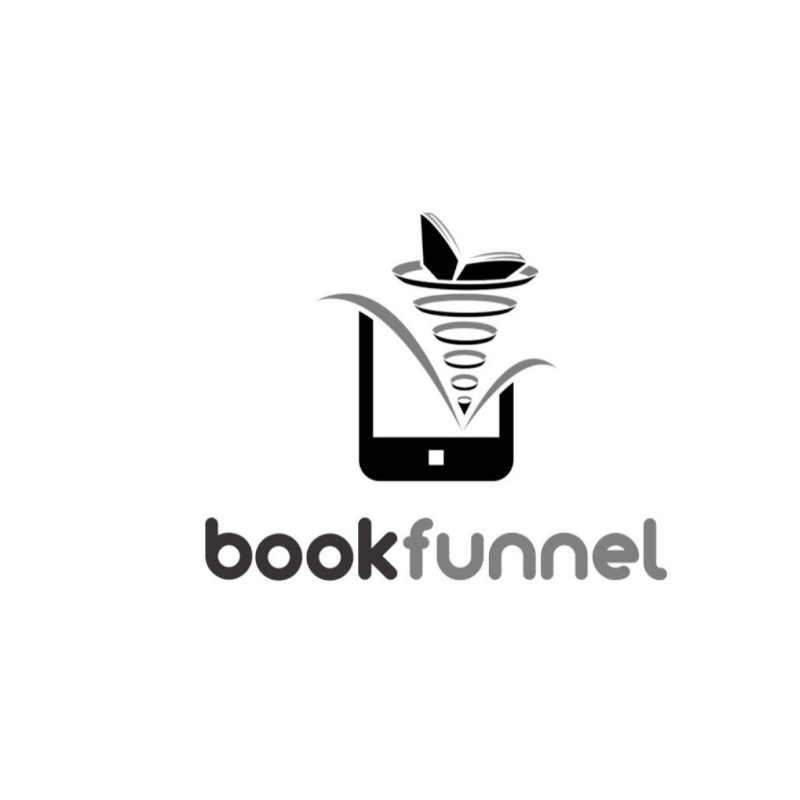
Beat Imposter Syndrome: A Guide for Indie Authors
Recognizing Imposter Syndrome
This is part one of a three part Mindset mini-series focusing on imposter syndrome. You may or may not have heard of it, you may or may not have experienced it, but it’s said to affect seven out of ten people.
Defining
It’s a term first coined by psychologists in 1978, and it refers to feelings of self-doubt, inadequacy, and the worry that someone will accuse you of being a fraud.
Frequently, people have trouble taking credit for their achievements and put their success down to luck. Or they find it difficult to accept compliments and believe that anybody else could have done the same or better.
It’s really common to experience feelings of inadequacy when embarking on something new—like writing a book or starting a new story.
“Writing is always full of self-doubt, but by the time I wrote my second book, I was familiar with that feeling of doubt and self-loathing, so I just thought, ‘Okay, this is how it feels to write a book.’”—Cheryl Strayed, bestselling author of Tiny Beautiful Things and Brave Enough
A lot of the advice out there suggests it’s possible to overcome imposter syndrome the same way you might get over a broken leg. Although imposter syndrome isn’t a medically classifiable disorder, matters of the mind are rarely that simple. Accepting that it’s part of who you are and developing coping strategies to quieten moments of self-doubt is a far better long-term plan.
Personifying
Personifying your imposter syndrome is one way to help keep you moving forward. Give it a name like Harold, Blippy, Snowball—call it whatever you like, give it a shape like a squishy kid’s toy, anything that will help you diminish its power over you. When it speaks to you, acknowledge it and say “thanks very much for your help,” and then carry on writing.
If that sounds too ridiculous, then ask yourself this: “What would another author do?” You could go deeper and insert your favorite author’s name to make it more specific, “What would Maya Angelou do?” Would she cave in to self-doubt, or would she carry on writing? And if she can do it, why not you?
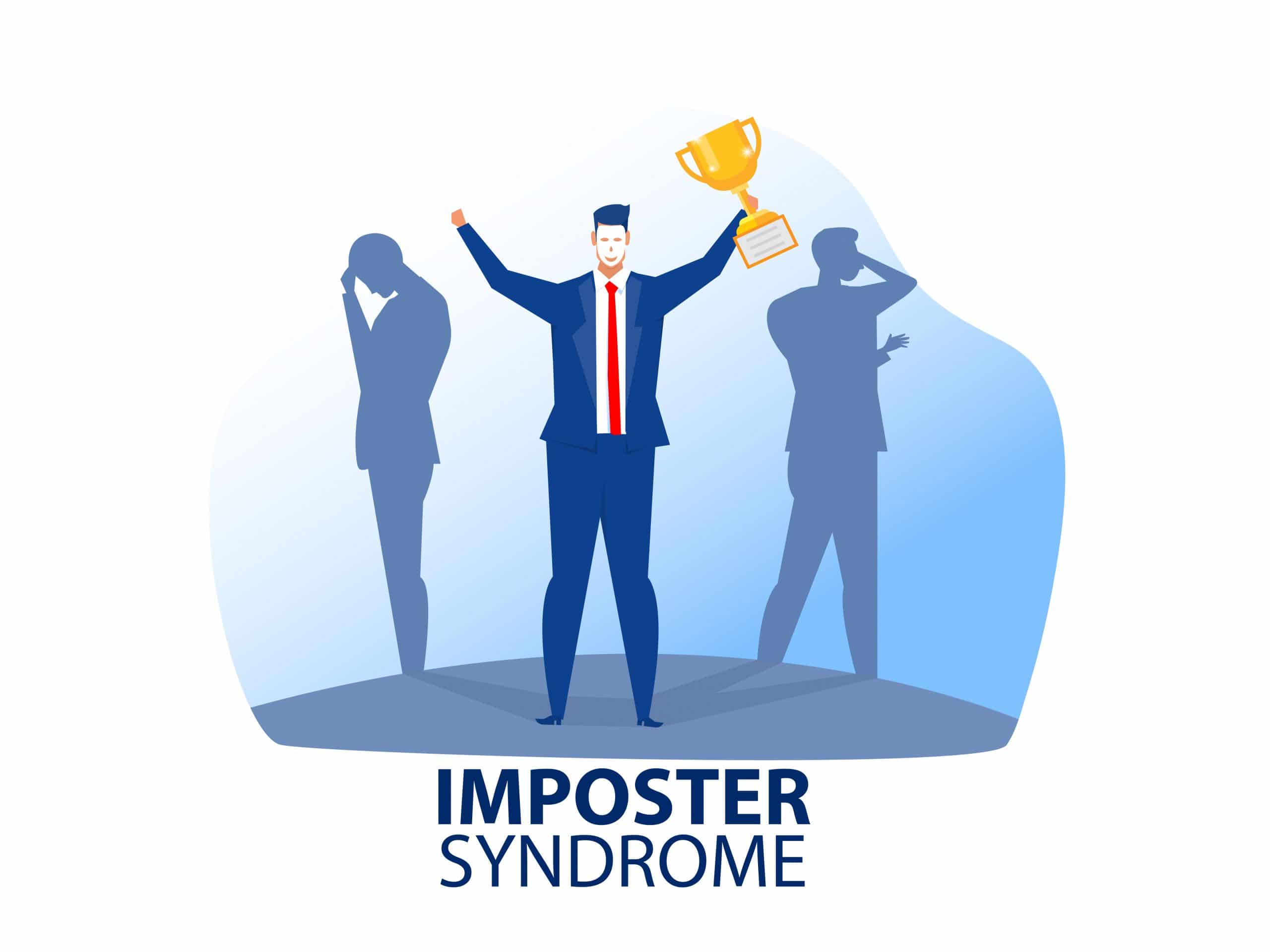
Amazon Publishing Success: Step-by-Step Guide for Authors
How to Find Keywords
Amazon is the largest search engine after Google, which owns YouTube. Readers find book listings through typing words and phrases into the search box. By picking appropriate keywords and keyword strings, you tell Amazon which categories to place your book in, and more importantly, which readers to recommend it to.
Do this research before you begin uploading your book and keep a record. Keywords are important for uploading further books in the same series, but also for advertising further down the line.
Method One (Free): Create a list of keywords, starting with one to three phrases specific to your book, such as “Military Sci-Fi Space Marines” or “Small Town Cowboy Romance.”
Use characterizations like “teenage witch” or “Navy SEAL,” genre descriptors like “Dark Romance,” or tropes like “enemies to lovers.” Or list relevant settings, such as “Victorian London.”
Method Two (Free): Go to the best-selling books in your genre. Take note of recurring words in titles, subtitles, and blurb. These are keywords you can use as well.
Method Three (Paid): KDSpy is a browser extension (US$97*) that provides revenue metrics, keywords, competitor research, book tracking, and more at your fingertips. https://kdspy.com
Method Four (Paid): Publisher Rocket is a software (US$97*) which makes keyword research very easy, not only for your listing on Amazon, but also for advertising and genre research. https://publisherrocket.com
*Price at time of printing.
Besides keywords, you need to know in which categories KDP should list your book. The paid methods above will help you with categories also. For a free approach, note the categories while looking for keywords with Method Two.
Ready to upload your book?
Make sure you have an account with Amazon and navigate to the Kindle Direct Publishing dashboard at https://kdp.amazon.com.
Page 1: “Kindle eBook Details” Page
Click on ‘Create a New Title’ on the KDP dashboard to arrive at the Kindle e-book Details Page. This is where you input your project details as they appear on your book listing page.
Book title and subtitle: Don’t be tempted to keyword stuff by stringing them together artificially, but if your book is a “biker comedy romance,” use that as a subtitle so readers can find their favorite trope.
Series: Create a new series if you’re planning further books. This will help Amazon link your books as you write them so readers can easily read through from one to the next.
KDP will ask you to add your series title, whether your books must be read in order, and a series blurb. If you don’t have one, the system will use the description of book one instead.
Enter your Author name and the names and roles of any Contributors (e.g. illustrator, translator, or a co-author).
Description: This is where you add your blurb or book description. Many writers find this difficult, but usually, their problems stem from a fundamental misunderstanding of what a blurb is.
A blurb is not a summary of your book.
This is your opportunity to sell your writing, to let readers know what your book is about, and ultimately, to entice them to buy. One simple formula to write a blurb is to establish what the protagonist wants, what’s in the way, and what’s at stake if they fail. Finish with one last sentence which shows the reader why this book is for them.
For more information, here’s an article going into more detail: https://blog.reedsy.com/write-blurb-novel
Pro Tip: A badly-formatted blurb will impact your sales. Use white space, bold, and italics to add emphasis. The Kindlepreneur Book Description Generator will help you turn your blurb into a html-formatted text which you can copy and paste into the KDP description box: https://kindlepreneur.com/amazon-book-description-generator
Keywords: This is where you enter your keywords. Dave Chesson did some great research on best practice and suggests you use all 50 characters per keyword box. His article explains the reasons: https://kindlepreneur.com/7-kindle-keywords
Categories: These categories are based on the BISAC, an industry standard code that KDP uses on their backend where you are required to pick up to three categories. The Amazon store front, however, uses categories that reflect what readers search for.
Pre-order: Here you can specify a future date if you’re not ready to publish yet.
Page 2: “Kindle eBook Content” page
On this page, you’ll upload your e-book cover and content.
Manuscript: You’re asked to make a decision on DRM. Digital Rights Management is meant to stop piracy, but unfortunately, it is very easy to strip DRM from a document. It may also upset readers who purchase your book, but can’t read it on a non-Kindle e-reader if DRM is enabled. Many authors don’t use DRM for that reason.
Upload your manuscript in either EPUB or DOCX. The MOBI format is no longer supported by KDP.
Kindle eBook Cover: Upload your cover as an image file. Ask your designer for help if there are any problems with the upload.
Kindle eBook Preview: Sometimes, the cover layout needs to be adjusted, or there’s a mistake inside your book. The preview catches any errors and makes sure your project complies with KDP’s standards.
Kindle eBook ISBN: You don’t need an ISBN for a Kindle e-book. You can assign one if you wish, but also feel free to skip this section. Press Save and Continue to advance to Page 3.
Page 3: “Kindle eBook Pricing” page
KDP Select Enrolment: Would you like to enrol your book in Kindle Select? Enrollment requires you to be exclusive to Amazon for ninety days. There are some benefits to the program, such as access to Kindle Unlimited readers (16-17% of the US e-book market, in addition to Amazon’s 70%). You receive royalties for pages read (KENP) rather than a percentage of the purchase price.
If you want to “go wide” instead of being exclusive with Amazon, look at
Territories and Primary Marketplace: Tick “All Territories” if you want to sell worldwide and choose the marketplace where you expect to sell most. This uses the currency of your primary marketplace to determine the price levels for all other markets.
Pricing: KDP will pay 70% royalty if you price your book from $2.99 to $9.99. Outside of that range, you earn 35%.
There are many different pricing approaches, depending on whether you write in series or your promotion strategies. Research your pricing in advance.
Pro Tip: Manually adjust prices in different marketplaces to make them familiar to readers. For example, adjust an automatically determined price of €2.78 to €2.99.
Pro Tip: KDP charges delivery costs of a few cents per book when using the 70% royalty option. However, if you include images in your project, the delivery fees can become a considerable cost to you.
Your last action is to click ‘Publish Your Kindle eBook.’ KDP promises that your listing will go live within 72 hours, but you may find it often takes less time.
Congratulations on launching your first e-book on Amazon!
Marion Hermannsen

Craft Engaging Character Backstories for Indie Authors
“Not all side characters are made equal.”
Backstory is what happened to your characters before page one of your story. Not everything—the reader doesn’t need to know what she had for breakfast on her tenth birthday, unless it led to anaphylaxis, and that pertains to the story you’re writing. Backstory adds depth to your characters. It helps the reader to connect with a character. Knowledge of elements of the character’s backstory can introduce tension and foreshadowing (now the reader knows about that tenth birthday trip to the ER, they’ll be giving the side-eye to those strawberry pancakes she’s about to eat). You can also use backstory to establish character flaws or misbeliefs they need to overcome through the story.
Backstory can be fed in to encourage the reader to empathise with a character. As readers, we began to experience empathy toward the previously maligned Professor Snape when we learned that he loved Harry’s mother and was bullied by the boy’s father.
Sacha Black, author of craft books on how to improve your prose and write better heroes, better villains, and better side characters, believes that before writing a backstory, you need to consider who actually needs one.
“The amount of backstory you need and its purpose depends on the level and type of character. Your hero obviously needs backstory. The protagonist is the one that has the most depth and the most comprehensive personality. Your villain needs some level of backstory to explain the motive for their behaviour. But then when it comes to side characters...”
Sacha explains that cameo side characters who are only in your story for a brief second don't need a backstory. Other minor characters might appear in your story a few more times than a cameo and have some transactional exchanges. They might have something distinctive about them but don't need much depth. “A good example is Mr. Filch in the Harry Potter series. You could remove him from the story, and he wouldn't really change it. But he has some transactional changes with Harry and causes a tiny bit of conflict. You may get the odd sentence or two of backstory.”
But what about major side characters? Sacha describes them as the big guns. “They require significant page time, have an effect on the protagonists, and on the story. All of these things mean that you need some depth or illusion of depth.”
We asked Sacha how the backstory should be added.
“Backstory is required when you need to explain a behaviour, when you need to give context for why somebody is in a current situation or why they are reluctant to change. And it also helps to provide an understanding for the whys of somebody's personality. It's relevant to the point and to the action and motivations in that scene. You have to find those scenes where the action is oriented towards explaining behaviour or showing flaws or showing the plot problems and then drip it in.”
But what if you want the reader to know something, but not give away too much? Sacha explains that backstory can be added as foreshadowing, which she describes as the art of dropping something unusual, unexpected, and then moving very quickly on from it so that it doesn't become a distraction.
Let’s talk tools.
There are going to be times when you might need a little help to create a character’s backstory.
“I want to expand the power of creativity.”
Jay Stilipec, a retired Navy journalist, created the Better Backstories cards through her love of role-playing games. “I just loved making new characters, and I loved making them very diverse.”
The author community factored into Jay’s endeavors shortly after she ran a Kickstarter which provided $25,000 funding and interest from people all over the world.
At Alaska Comic-Con in 2020, Jay met Craig Martelle. She showed the cards to the successful indie author, who loved them and immediately ordered thirty packs to use as giveaways in his Facebook group, 20Booksto50k. That connected the entrepreneur with more writers, and her project took off from there.
We asked Jay, how are the cards used?
"You flip over a few cards, and you've got a character."
"I know people who just use the title (in bold), and they let that spark their imagination. But you've got some cards that have flavor text that'll give you some suggestions. You've got cards that have a chart that has up to ten more suggestions. It’s just a spark to ignite the fire of this character's backstory and to make their life a little bit more realistic and believable."
Jay is occasionally surprised and delighted by the different creative ways people use the cards.
I've had people say they shuffled out three cards to each player during the [roleplaying] game at a crucial moment in the narrative. That's brilliant. It never occurred to me. I love to hear different people's ways of playing it, whether random or deliberate. You don't even have to use the whole deck. You can literally go through and say, ‘you know what, these twenty cards are the backstory elements that I want to see in my story.’"
“Brainstorming power in the palm of my hand.”
We gave her the scenario of a protagonist watching a man walk down the street. Here’s what the cards revealed about the character.
“The occult card. This guy is wearing a dark robe. There's a red glow coming from just inside the cowl. And this is already kind of leaning towards a fantasy angle. He's looking suspicious, and then he kind of goes up to a doorway, and I get the runaway card. Our protagonist finds a cult that has been kidnapping runaway pregnant mothers to bewitch their unborn babies. It's a good, well-rounded character. A complex character is random and unexpected."
These three cards randomly plucked from the deck have given us ideas and questions that need answering about a character’s backstory. But they have also potentially inspired a plot for a whole book or series.
How deep does Jay’s interest in backstory go? We asked if she had ever made up a backstory for a character she felt didn't already have a sufficient one in a movie or book?
“I've always wondered, how did Martin and Doc meet? (Back to the Future) It’s a weird relationship that this 16-year-old boy has with the local crackpot inventor.” Jay’s backstory-finding superpower suggests they might have met when Doc put an ad for a lab assistant in the local paper, and we think she might be right!
“Intrigue the reader.”
As Science Fiction author Jon Evans says, “If you know where a character comes from, what their formative moments were, you can reference that in your story in a way that will intrigue the reader.”
So, if you feel that offering more in the way of backstory will immerse your readers more deeply into your story, it might just be the way to keep them coming back for more.
Want to find our interviewees in the wild?
Jon Evans can be found at jonevansbooks.com Twitter: @ImaginaryBros
You can see Jay and glimpse the Better Backstories cards at Baltimore Comic-Con in October.
Jay’s website is Betterbackstories.com.
On Instagram: @backstories22 Twitter: @backstories22 Facebook: betterbackstories.
Find Sacha at sachablack.co.uk. On Facebook her group is Rebel Authors, and on Instagram: @SashaBlackauthor. Podcast: Rebel Author
Conquer Imposter Syndrome as a Creative Entrepreneur
In over two decades of entrepreneurship, there hasn’t been a single successful person I’ve known, followed, or interviewed that hasn’t admitted to doubting themselves at some point.
Call it what you will. I’ve distilled the many names I’ve used over the years down to ‘imposter syndrome’, ‘existential crisis’, and ‘plain old doubt’. It’s the voice in my head that says, “you’re not good enough.”
In this month’s mindset, we start a three-part series on banishing the beast of Imposter Syndrome and ways you can mitigate its effects on your life and career. It’s a subject I have often struggled with over the years and even now have to battle.
Let me share with you some sage advice given to me by our own Alice Briggs that helped me. She explained the difference between tour guides and explorers.
Tour Guides follow the well-worn path. They’ve seen the landscape and know all the rocks and trees by heart. They’re in the safety zone, and they’re content with what they have at that exact moment.
Explorers, on the other hand, take risks. They blaze trails. They are in charge of their own destinies because they’re charting new territories and finding new ways up the mountain of success.
There’s nothing inherently wrong with either. But if you’re doing something new — if you’re an explorer — then there will be times when you’re not sure of what you’re doing. You’ll feel like an imposter because you’re doing something that you’ve never done before and you’re learning.
That to me is exciting. I love being an explorer. And it gives me a very handy stick with which to beat back that inner critic when she whispers, “not good enough.”
“Hush up,” I reply. “I’m on an adventure.”
To your success (and adventures),
Chelle

Publish eBooks Directly vs. Distributor: Which's Better?
Wide vs. Exclusive: Which is for You?
In “Wide vs. Exclusive: Which is for You?” (IAM May 2021), we covered the pros and cons of publishing e-books as widely as possible. The alternative is publishing through programs requiring exclusivity, like Amazon’s KDP Select program.
When authors decide to publish their e-books wide, the next question is: “go direct” or use a distributor? It’s a classic case of control versus convenience, with a smattering of opportunity.
Authors who “go direct” must upload files, fill out metadata, and manage promotions for each retailer separately. A distributor does the work of sending your files to each retailer and collecting your royalties, usually for some percentage of royalties. Many wide authors use a combination, publishing directly with some retailers and using distributors for others.
Direct
The advantages for going direct to each online retailer are promotion opportunities, metadata and categories, (i.e. not having least common denominator keywords and categories because the distributor has streamlined the data entry process), pre-order options, and receiving the full royalties.
At first glance, it might seem pointless to learn the ins and outs of each retailer. After all, you don’t know yet if your books will sell there. Consider this: the unique quirks of each retailer might be the hidden route to your ideal readers.
You can show the online bookstores you are serious about selling books with them by your thoughtful choices, polite questions, and consideration for their customers. (In a nutshell: “How can I help your customers find my book in your store?”) Remember, the retailer is the middleman between you and your readers; you want to build a strong relationship with the retailer yourself, to leverage the retailer’s relationship with their customers.
Retailer Promotion
Many distributors and online retailers entice authors by offering book promotion opportunities. These are the digital equivalent of having your book on special display in a bookstore. Authors talk about the power of the Amazon algorithm, but other retailers also have the ability to push book sales.
For example, uploading your books directly to Kobo makes sense for their promotion opportunities alone. Their “promotion tab” lists upcoming sales and eligibility requirements and allows you to pitch your books to the Kobo Writing Life team. The tab isn’t automatically added to your dashboard; you have to email them to request it.
Barnes & Noble (B&N) is another online retailer where promotion opportunities are available for eligible authors. B&N Press is now available for authors in the U.S., U.K., Ireland, Canada, Australia, New Zealand, France, Italy, Germany, Spain, The Netherlands, and Belgium. They also have promotions options and unique categories called “themes” for certain genres that you won’t find in any of the other stores. That’s why, if you use a distributor, you’ll never see these themes or their promotion opportunities.
Managing Metadata
Publishing directly with Google Play Books makes sense for metadata and for scheduling price changes. Compared to Kobo Writing Life, Google Play Books takes a much more data-driven approach.
Google Play Books has no promotion tabs, but you can signal an upcoming promotion by using their coupon or price change scheduler. Instead of the familiar categories and keywords in Amazon’s Kindle publishing dashboard, Google Play Books has extensive international categories and uses the complete book description in its search engine. Updates are almost immediate.
When you’re setting things up, don’t confuse Google Play Books with Google Books, the online library of books, or with Google Play, a marketplace for apps.
Distributor
Some advantages to using a distributor include convenience in publishing, pricing, finding out about possible new markets, and reaching markets that don’t allow direct publishing. They may also provide help with formatting and marketing.
Retailer Promotion
Usually, direct authors have better access to promotion opportunities. Apple Books is one important exception: they allow authors to participate in all types of promotions no matter how the books arrive in their store. For example, Draft2Digital (D2D) distributes to Apple Books, but authors can be nominated for Apple Books promotion opportunities. Currently, D2D authors can fill out an online form to request promotion for new releases, permafree, and discounted titles. If you distribute books via D2D, you can email support@draft2digital.com, and ask to be added to their promotion opportunities list.
All distributors are not created equal
Just to mix things up, some retailers are also distributors, like Kobo, and Germany’s Tolino. Going direct to Kobo gets you into many other stores, including special access to the Overdrive library system with no deduction in royalties. You can email Kobo Writing Life (Writinglife@kobo.com) and request to be added to their notification list for Overdrive promotions.
There is no one distributor that covers all the retailers, and there is often overlap. If you choose more than one distributor, keep track of where you’ve opted in to each retailer. Duplicate records can cause problems with promotions and reviews.
Upload and hold
Once you’ve made your choices for Apple and Overdrive, don’t change them. Apple doesn’t “bring your reviews over,” so if your books move from a distributor to direct or vice versa, you will lose your existing reviews on Apple Books. Overdrive is a massive library system where you don’t want to mess up the data. No author wants to make librarians angry.
While IngramSpark is a leader for print distribution, they are less strong for e-book distribution. If you start with them, it can be awkward and costly in terms of both time and momentum to delist if you change your mind later. If you want to use a distributor for your e-books, Draft2Digital, PublishDrive, or Kobo may be better options for you.
Reach and Reputation
New opportunities for publishing e-books are popping up every day. As your publishing capacity grows—i.e. your writing process isn’t swamped by administrative tasks—you can add more venues, formats, languages, and countries. Pace yourself.
When you start out, the online stores have a longer reach and are much better known to their customers than you are. You are building a business-to-business relationship with the retailer, and your books benefit from their reach and reputation.
Mentioning online retailers by name on social media posts and your website sends traffic to their store. It might not seem like much, until you remember how many indie authors there are in the world. If each one of us posts regularly about our books, the traffic to the stores adds up, building a positive relationship between the author and the retailer.

Craig Martelle: Crafting Indie Publishing Success
Meet the Man Behind 20BooksTo50K® and the World's Biggest Indie Author Conference
To an online author group of over 50,000 people, a wise man once said, “The most important gift you can give somebody is your time because you don’t get it back when it’s gone.” And while that statement isn’t novel, it seems apropos, almost ironic even, when considering the speaker: Craig Martelle.
For readers of a publication titled Indie Author Magazine, that name is likely known, or familiar at the very least. Until a conference in November 2019, to this author, the name was merely synonymous with 20Booksto50k®; he was part of the regular cast, a headliner, but distant all the same.
But Vegas is a place full of the unexpected, a place where the Craig Martelle shines.
The energy in the room was thick. You’d think we were all waiting for a popular band to start their set. The audience was enthusiastic as a voice echoed from the podium. “I’m Craig Martelle. This is Michael Anderle. Welcome to 20Books Vegas,” trailed closely by, “If we get a fire alarm, that means there’s a fire. Get the ... out.”
Thankfully, no actual fires were started over the course of the following few days. A few figurative sparks maybe, but we remained safe with our lanyards and giant cookies as the trajectories of more than a few author careers were changed on impact.
If you think managing the biggest indie author conference in the world is Craig’s—a man who claims to be an introvert—only gig, you’d be wrong. There are over a hundred books in the genres of Military SciFi, Space Adventure, Space Opera, Space Western, Post Apocalyptic, Apocalyptic Western, Thriller, Mystery, and Non-fiction credited to Craig Martelle as an author, co-author, and collaborator. He’s a hybrid author who understands the various paths up the mountain of publishing better than many.
When asked about what inspired him to start writing, Craig tells a story about being first introduced to the world of Dungeons and Dragons at the age of twelve while growing up outside of Lake Geneva, Wisconsin, where the game originated.
“I liked how it excited the imagination, and I liked the stories that people were writing from this stuff. Gaming was okay, but I really liked the world and the stories.”
His love for the stories was put on hold during his twenty-one years in the Marine Corps followed by what he describes as very unfun law school and a seven-year career in business consulting spent working inside the Arctic Circle in Alaska. Eventually, Craig decided that a temperature of -74 and being away from his wife for months out of the year was enough to consider retiring. After a yardwork accident resulted in lighting himself on fire, he was left bandaged and stuck in the house with far too much energy to sit idly. Sixty-one days later, a hundred-thousand-word book was complete.
By February 2016, he’d published book one with little fanfare and written two additional stories. A chance encounter with Michael Anderle on kboards.com, a forum for Amazon and Kindle, pulled him into the 20Books orbit, and as they say, the rest is history.
And by “the rest,” we mean the aforementioned sixty plus solo-authored titles and more than forty titles co-authored in less than five years, almost-daily focus videos, interviews, scholarship efforts for newbies, and so much more—definitely too much energy to relax and enjoy what could have been a nice, relaxing retirement.
“It’s ok to switch hats. I wear hats a lot because I have no hair.”
The Leader
Now, you might believe that extreme cold followed by brief pyromania is fascinating enough, but it’s even more interesting to listen to this very busy human talk about what it means to him to “lead from the front,” in relation to the work he does in indie author spaces. If you review the videos for Craig’s five-minute focus on the 20Books YouTube channel or in the 20Booksto50k® Facebook group, you’ll find topics on everything from author websites to mental health. You’ll also find an impassioned speaker preaching the gospel

Breaking Bad Habits for Author Success
We’ve All Seen The Quote:
“We are what we repeatedly do. Excellence, therefore, is not an act but a habit.”
– Will Durant (Not Aristotle)
Habits are funny things, aren’t they? In Atomic Habits, James Clear defines them as “a routine or practice performed regularly; an automatic response to a specific situation.” There are good habits, and there are bad habits.
I’ve studied habits for the better part of my career, ever since I realized that I have the same number of hours in a day as Beyonce. I’ve always found it inspiring to learn what high performing people do daily, especially if they attribute routines or habits to their success.
Successful People Have Routines
Some of them ascribe to waking early, working out, and having a smoothie. Some swear by not checking email until later in the day, and meditation. Others swear by the necessity of making your bed, or practicing yoga.
And of course there’s the habit of wearing the same outfit every day, which is said to reduce decision fatigue.
How Do Habits Impact Indie Authors?
I would never suggest that we all clear out our closets and fill them only with black turtlenecks, but it’s my firm belief that habits are the only difference between a long-term successful career, and an author that gives up, feeling defeated.
Here’s why: it’s not because of the habits you adopt consciously, like daily word counts, a yoga practice, or meditating 20 minutes per day. Although those are great.
It’s Because Of James Clear’s Second Definition Of A Habit.
“… an automatic response to a specific situation.”
At the end of a day, do you read something to help your business, or jump on TikTok?
When you’re stressed, do you drink some water, or grab a Snickers?
If you’re stuck writing a scene, do you go for a walk, or open Facebook?
(Hi, I’m Chelle✋ and the list above is mine.)
Happy, productive writers pay attention to their unconscious habits and make incremental changes to ensure their automatic response to a specific situation is a better choice.
This week, take some time to consider your go-to habits. It might take a couple days of active monitoring to see them, but once you do, think about better responses. Habits take time to make and break, but you won’t be able to start until you’re aware of them and craft your plan to address them.
And then Beyonce better watch out.
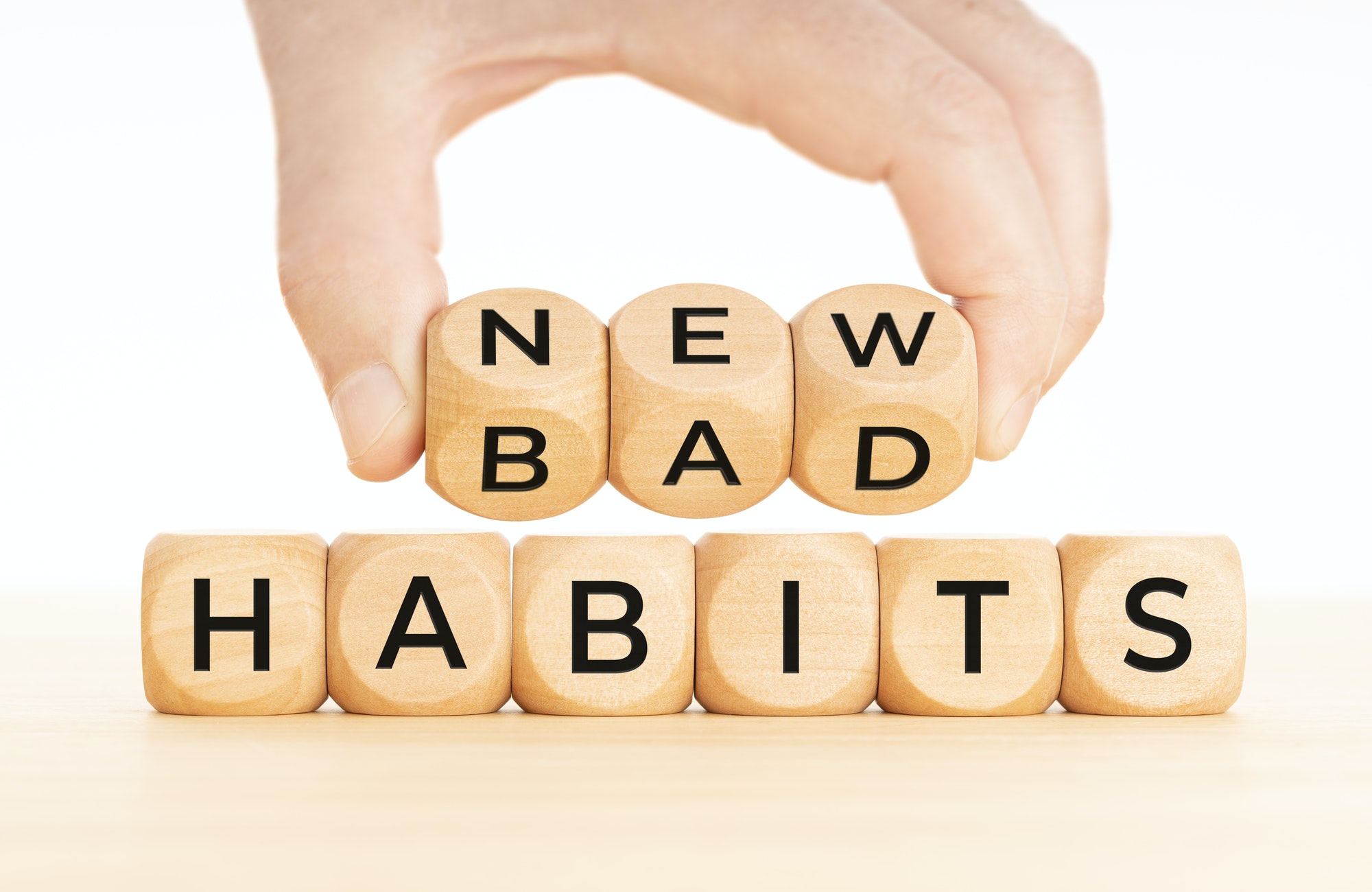
Indie Author Success Stories: Spotlight Your Journey
When we started planning the magazine issues for the first two years, we decided we wanted to tell the stories of different indie authors each month. After meeting so many innovative, smart, and creative people over the past few years, we knew we would never run out of stories to tell.
Foremost, our featured subjects embody the indie spirit — the fearlessness and tenacity of this new breed of writer taking charge of their writing and career. Even if hybrid published, the spirit of independence is key. We love to tell stories of innovation and creativity. How overcoming obstacles and persevering led to success.
How It Started and How It's Going
We planned each issue to have a specific—though not exclusive—theme, like plotting and outlining, first drafts, cover designs, and so on, and we felt that having an author with a complementary story would tie it all up nicely for our readers each month. Our roadmap aligns with the loose path an indie might take from idea to publication and the authors we've chosen so far support that roadmap.
While there was some specific criteria for the people that would represent that issue on the cover, it wasn't a hard and fast checklist, meant to rule out people. It was a list that helped us find who best represented what we felt inspired our community.
It remains crucial that we not present a single prescriptive path to success, because there are many ways up the mountain. And we didn't want to use a single definition of success at all. Some of us are still hanging out at base camp at the bottom of that daunting hill, trying to gain the courage to take the first step. That's cool, too.
At first we thought this section and the cover would belong to a single writer, but as you'll see on October 2021's cover, we've expanded that belief to include couples and teams. No one achieves success alone, and sometimes the stories are inextricably linked, like the story of Dr. Danielle and Dakota Krout.
What We're Looking For in 2022
And now we're ready to plan 2022. With that in mind, here's some clarity as to what we're looking for and an invitation to the indie author community at large to tell us who we should feature. Keep a few things in mind as you think of who should be on the cover — especially if it's you.
Representation matters. We look for people that other indies see and say to themselves, "I might be able to do that, too." Our community is diverse and we want to be sure that we do our best to represent that diversity.
Success is Subjective. Some people define success as simply finishing a first draft. Some define it as publishing a book a month. Still others want to see commas between numbers in their bank account. Every one of those definitions is valid, as well as valued within the IAM community.
We respect every distribution channel. Some of us are finding success in Kindle Unlimited, while others are wide. Some are publishing serial fiction on subscription-based apps, and some are killing it selling from their own websites, adding merchandise, audio versions, planners, apps, and other new media.
Genre is genre. Thriller, Romance, Mystery. Poetry, spoken word, graphic novel. Spicy, steamy, clean. We respect all of them. Don't disqualify yourself because you write fill in the blank.
Here's How You Can Nominate Yourself or Someone Else
We've made it easy. Don't overthink it. It's a short form and we'll take it from there. Tell us the most compelling reason that your nomination inspires our indie author community.
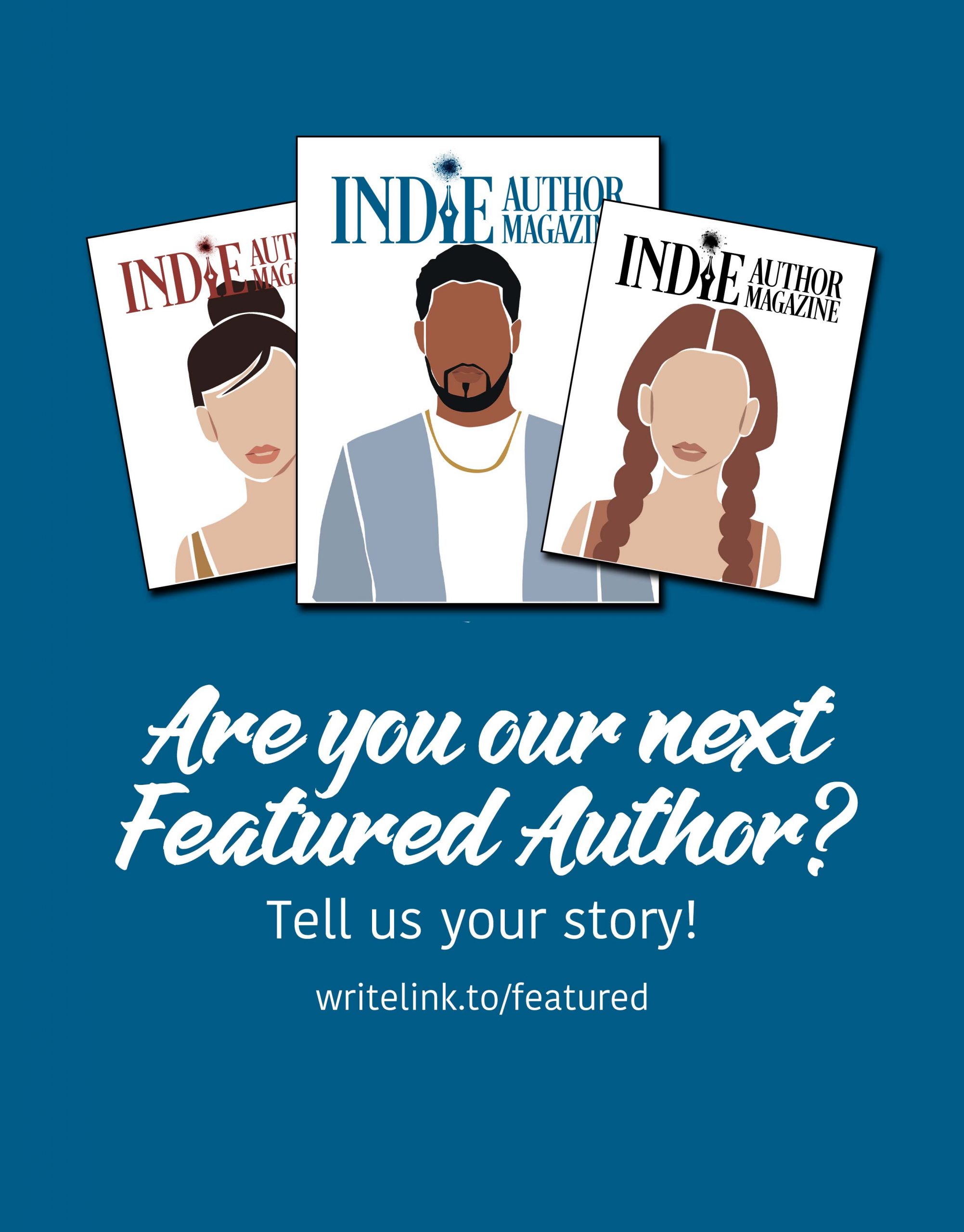
💡
The Rest of This Issue is for Paid Subscribers Only
Get more than just tips—get real results. As a paid subscriber, you'll unlock the full-color issue, VIP access to webinars and training, discounts on software and tools, and a community to support your journey.
Get more than just tips—get real results. As a paid subscriber, you'll unlock the full-color issue, VIP access to webinars and training, discounts on software and tools, and a community to support your journey.

